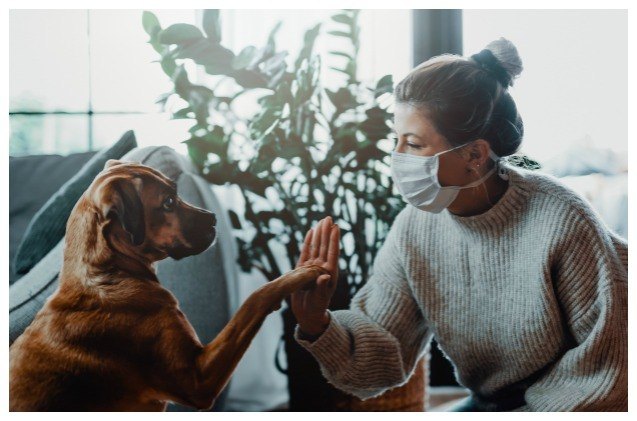CDC Expands Social Distancing Guidelines Now Include Pets

The CDC guidelines contend that as more information about the virus and how it spreads continues to pour in, they have the belief that the virus can spread from humans to animals in some situations. They are referring to some pet cats that were believed to be infected after close contact with people who tested positive for COVID-19, as well as a tiger at a New York zoo who also tested positive for SARS-CoV2, the virus that causes COVID-19.
Related: Sniffer Dogs Could Be Used To Screen for COVID-19
They are quick to emphasize, however, that no evidence shows animals play any significant role in spreading the virus that causes COVID-19 at this time. It’s important to note this, so that animals are not abused or surrendered for fear of catching the virus. The virus that causes COVID-19 is spread mainly through respiratory droplets that come from coughing, sneezing or talking.
Just as people who are sick with COVID-19 should isolate themselves from people and animals (their pets included) while they are ill, the CDC now also recommends social distance guidelines for pets as well.
For those who have animals in their home, the CDC recommends:
- Not letting your pets interact with other animals or people outside your household.
- Keeping cats indoors so they don’t interact with other people or animals.
- Always walk dogs on a leash and maintain at least 6 feet from other animals and people.
- Stay away from public places like dog parks or other places where people and dogs gather in large numbers.
- Talk to your veterinarian if you believe your pet is ill or you are worried about your pet’s health.
If you are sick with COVID-19, or even if you suspect you may be ill, you should also try to restrict your contact with your pets and other animals as you would people. In those instances, the CDC recommends the following:
- Try to have other members of your household take care of your pet while you’re ill.
- Avoid contact with your pet while you’re ill–this includes cuddling, petting, snuggling, kissing or being licked or sharing any food or bedding.
- If you can’t avoid being the one taking care of your pet, wear a facecloth/mask and wash your hands before and after you interact with your pet.
If your pet becomes sick while you are still ill, the CDC does not recommend taking them to the veterinarian yourself. Instead, they advise you to call your vet and let them know you’re sick with COVID-19 (or recently had been). Your vet will then determine what the next steps for your pet are as the CDC has released guidelines for veterinarians during COVID-19.
Related: Quarantined With Pets? Here Are Must-Have Essentials During COVID-19
Remember the CDC reiterates that there is NO evidence that animals play a significant role in spreading COVID-19. The risk of animals spreading it to people is low based on current information and evidence, but it’s still always a good idea to use good hygiene and healthy habits around your pet. The CDC suggests these to be:
- Washing your hands after interacting with your pet, their food, waste or supplies.
- Clean up after your pets properly and use good pet hygiene.
Don’t forget–now is actually a great time to consider fostering or adopting a pet. And following safe guidelines will make it even better an adventure.

More by Lori Ennis























